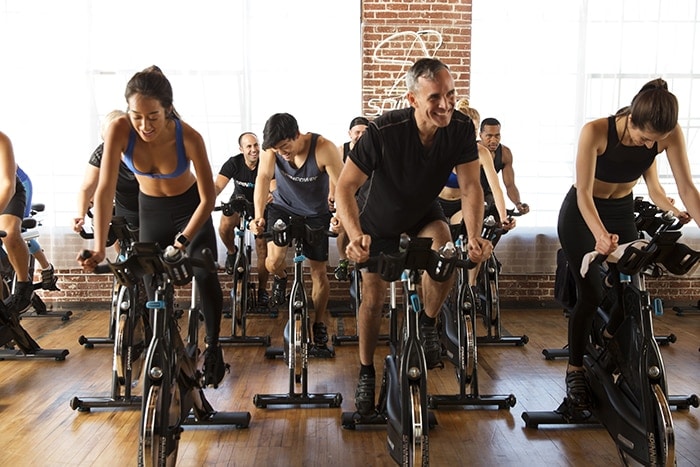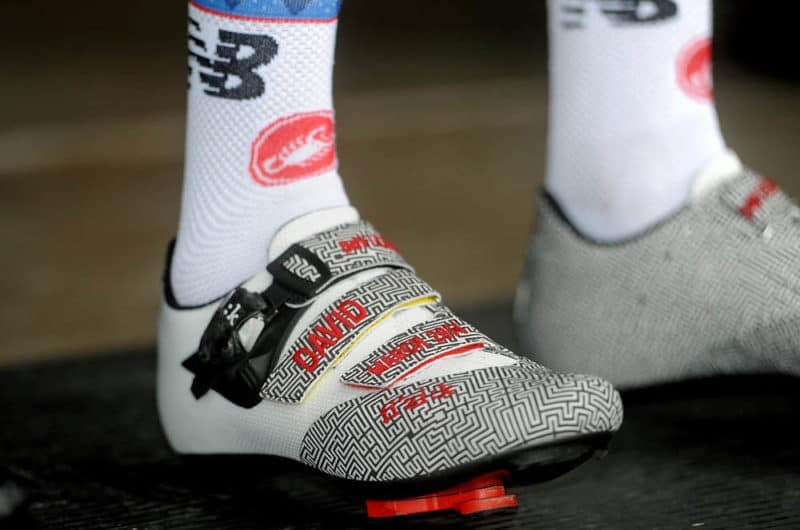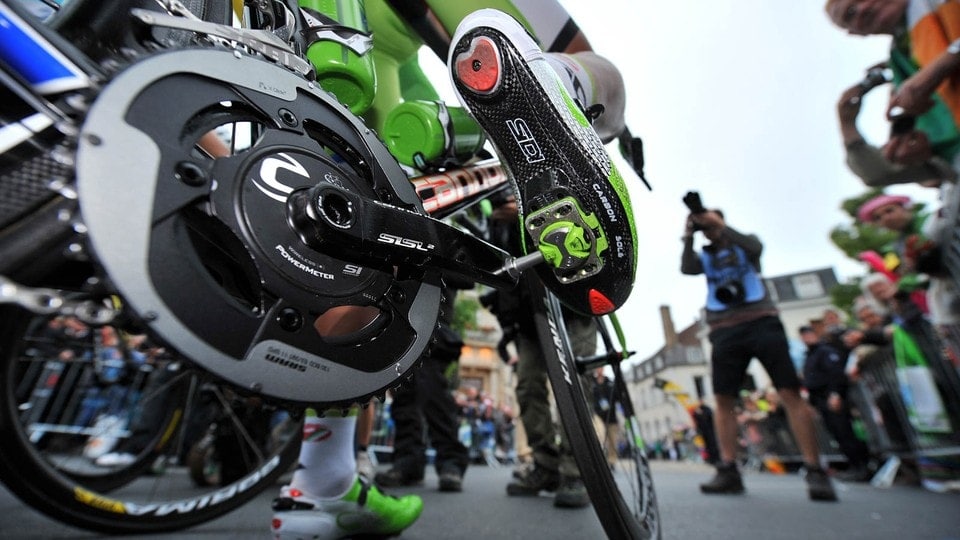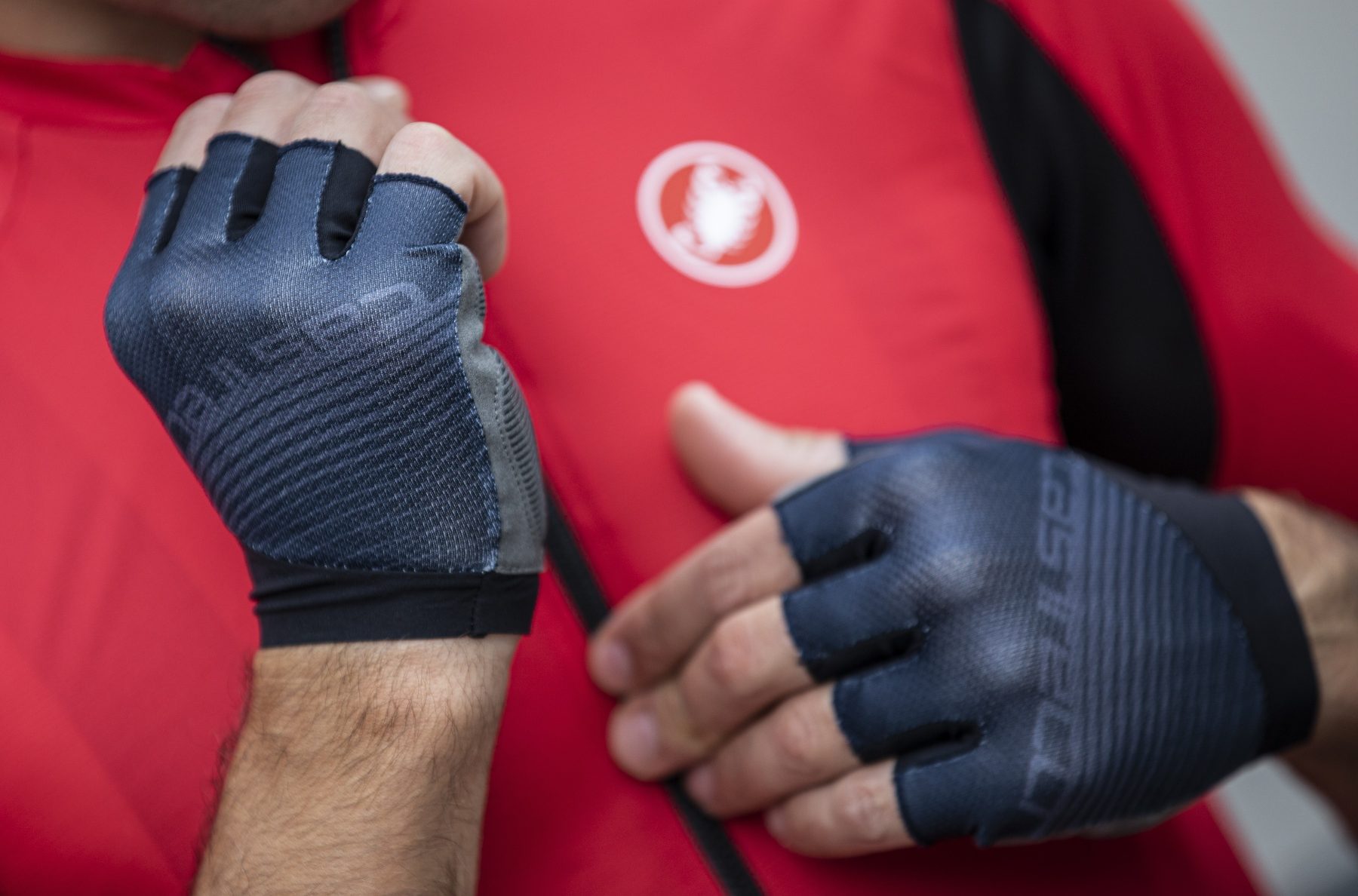How to Ease Knee Pain for Cyclists
Have you ever experienced knee pain on the bike?
Chances are the answer is yes. Generalized knee pain is a common problem that afflicts the cycling community, pros and amateurs alike.
Whatever your level, any pain is debilitating and takes the enjoyment out of your favorite pastime. But knee pain strikes a special level of fear in the heart of every cyclist as it may cause you to stop riding entirely.
What causes it? Why is it in some spots and not others?
We’re here to answer your questions about cycling knee pain and tell you what to do about it.
A Brief Knee Anatomy Overview
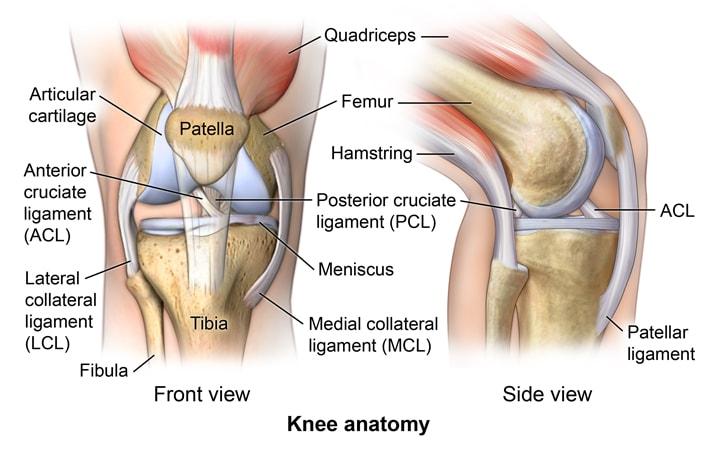
Understanding knee architecture helps explain related injuries.
The knee is one of the most intricate joints in the body, formed by the distal (furthest away) part of your thigh bone, the femur, and the proximal end (closest end) of the larger bone in your lower leg, the tibia. Picture the contact between these two bones, the space between them is covered by the kneecap, the patella.
Tendons attach muscles to bones, and ligaments, bones to bones. When you bend your knee, the kneecap glides linearly in the trench between the two thanks to surrounding ligaments and tendons that hold it in place. The distal end of the second and smaller bone in the lower leg, the fibula, also plays a role in knee architecture.
Let’s move onto the subject at hand, or should I say knee?
Anterior (Front) Knee Pain
Anterior knee pain is the most common among cyclists due to overuse.
Any pain you feel on or around the kneecap is defined as being anterior, which is medical jargon for the front.
As we discovered earlier, the kneecap glides between the space created by the ends of the femur and tibia and a portion of the fibula. The knee functions like a hinge, opening it (bending) is called flexion, and closing it, extension.
The patella adheres to its track between the two bones thanks to surrounding ligaments and the tendons from our quadriceps muscles (front thigh) that merge to create one large elastic tendon that passes over the top of the kneecap and anchors onto the tibia. This is how it stays in its path as the knee bends and extends.
Every time you complete a revolution, the knee opens and closes as the patella glides between the two. Cyclists average between 80 to 90+ revolutions a minute, so the knee joint sees a lot of repetitive action which can lead to pain caused by damage or inflammation.
How to Ease Anterior Knee Pain
Every bone and ligament has a lining that shields it against damage. Pain comes when this coating becomes irritated from repeated friction or an imbalance in the kneecap movement over the joint.
This imbalance comes from the quadriceps muscles, if one is stronger than the others, the patella tracks at an angle. Finding harmony among all factors involved is the key.
Let’s look at how to regain that balance and ease your pain.
- Keep your leg extended (straight out) as much as possible to recover. Don’t apply heat, ice is preferred and a bag of frozen peas is ideal as it forms to the joint. Place a damp paper towel between the bag and your skin. Refreeze the peas for another time, but mark the bag so no one eats them. Allow the skin to return to room temperature between sessions.
- Correct saddle height and crankarm length. Do you know your ideal saddle height and crank arm length? Have you recently changed one of the two? Check yours and adjust as necessary.
- Ride between 80 to 90rpm. No more gear mashing.
- Build strength in your quads, particularly the Vastus Medialis Oblique (VMO), which runs along the inner (medial) thigh to the knee. The full range of motion of this muscle is never met when cycling which leaves it as the weak link.
- Don’t stress the joint as it heals. Avoid stooping down if something falls and take it easy on the stairs. Go up with the good and down with the bad.
- Stretch as tolerated to improve your range of motion, and self massage to loosen up tight muscles pulling things out of alignment.
Posterior (Rear) Knee Pain
The space behind the knee (posterior side) contains softer tissues less likely to be affected when cycling. This significantly narrows the causes of injury, and repeated knee overextension tends to be the culprit.
Posterior knee pain is the least common among cyclists and overextension is caused by saddles that are too high or placed too far back.
If you have pain behind the knee, check with your doctor for a proper diagnosis. It may be a sign of something affecting the softer tissue located there that may not be cycling related.
How to Ease Posterior Knee Pain
- Stretch (don’t bounce) the back of your legs by dropping your heels off the end of a step.
- Cleat positioning. Have you changed shoes and pedals recently? Brands don’t have the same stack height, and those new ones could be causing your leg to overextend with each stroke. The difference may be millimeters, but overtime time that’s all it takes.
- Saddle height. Check your saddle height or try lowering it a bit. If yours is too high, it forces the knee to overextend with every revolution.
- Saddle fore-aft. Is your saddle too far back? Experiment by moving it forward a few millimeters toward the handlebars.
Read More : A Beginner’s Guide to Bike Saddles
Lateral (Outside) and Medial (Inside) Knee Pain
Lateral or medial knee pain is the most prevalent among cyclists, I’ve experienced it myself. Improper cleat position was my offender. I’m not alone in the stats, as this is the primary cause of this type of pain for cyclists.
Clipless pedals provide a certain amount of float to prevent this type of injury, but if their initial position is off, it negates any benefit from the float.
Cyclists end up locked in a position that doesn’t jibe with what our hips, knees, and feet find comfortable. It affects not only pedaling efficiency but can irritate the ligaments and tendons on the sides of your knees as you pedal outside of your natural plane.
How to Ease Lateral and Medial Knee Pain
- Get a professional bike fit to ensure your pedals and cleats (and the rest of the bike) are in the correct position for your anatomy. You may need longer pedal spindles, but the fit will let you know.
- Worn-out cleats. If your cleats are aligned properly, then check for wear or some other cleat issue that is causing your foot to favor an irregular position.
- Cleat float. Did you make a cleat change lately? Check their color and/or degree of float. You (or the shop salesperson) may have made a mistake, and you’re riding with zero or limited float than what you are used to.
Read More : A Beginner’s Guide to Cycling Shoes
Iliotibial Band Syndrome
The Iliotibial (IT) Band is on the outside (lateral) of the thigh. It’s a band of elastic connective tissue that runs from just above the hip to where our knee meets the tibia. It plays an important role in securing the outside of the knee as the leg flexes and extends.
Iliotibial Band Syndrome is the name of the condition that results in this connective tissue becoming irritated. It occurs after being repeatedly dragged back and forth over a bony point on the femur as the leg flexes and extends (like plucking a tight guitar string over and over).
This injury is more prevalent in runners, but affects cyclists too, but typically on one side only because of overuse with a poor cleat position.
How to Ease Iliotibial Band Syndrome
- Work on strengthening your VMO (Vastus Medialis Oblique) muscle to better stabilize the outer knee, as it’s commonly the weakest of the quad muscle group.
- Improve flexibility and perform specific IT Band stretches to reduce tension.
- Practice self-massage, use a foam roller over the area or schedule a professional massage to work out the knots in your IT band. It won’t be comfortable, but the discomfort is a necessary evil.
- Go for a professional bike fit to find your ideal cleat position and determine if you have a leg length discrepancy easily solved by a shim under your cleat.

